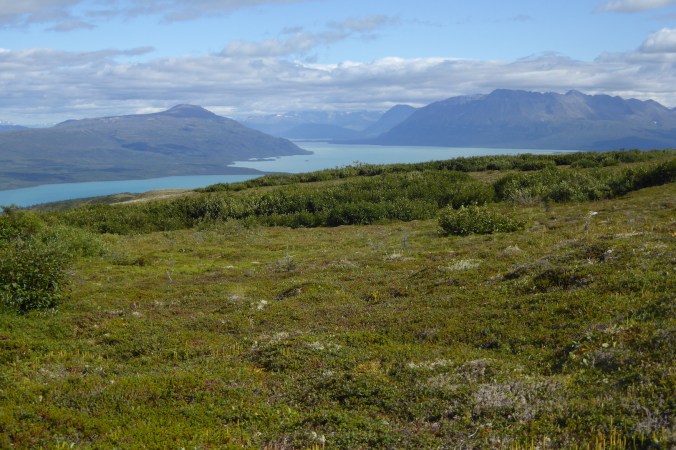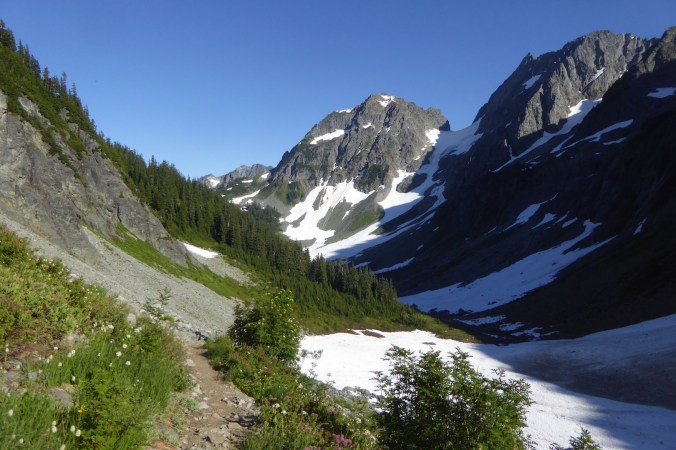Last year, Isle Royale National Park released a draft plan to determine whether and how to stabilize the park’s wolf population. After evaluating the merits of several alternatives, weeding through public feedback, and with only two wolves remaining, the park has decided to introduce 20-30 wolves over a three-year period. In the park’s decision, managers have affirmed their belief that wolves on Isle Royale are an irreplaceable part of the ecosystem, and their loss is unacceptable.
Parks are being increasingly managed for change, but the myth of national parks as static vignettes of primitive America remains pervasive. As I wrote on this issue last year, parks are not pure. We live in an era of unprecedented change, and situations like Isle Royale’s will only become more common.
The National Park Service has made strides toward acknowledging that parks will change, but it’s time to put a greater effort into planning for it. To help the public better understand the dynamic nature of national parks and their significance—what we’re willing to save and what we’re willing to let go—there should be an effort across the NPS to identify at-risk resources and decide whether to protect them. Resources to protect would be species, habitats, and processes that if lost would impair the significance of the park or reduce biodiversity. This could help guide current and future management of parks, leading the NPS to implement preventative or prescriptive actions to stave off unacceptable impairment instead of waiting until it’s nearly too late.
In areas with endemic or endangered species—such as Hawaii Volcanoes, Haleakala, and Channel Islands—it may be most appropriate to manage against change to mitigate the risk of losing unique habitats or species to extinction.

In other areas where forest compositions will shift, it may be more appropriate to let change happen as long as native biodiversity is protected.

In Katmai National Park, shrubs and trees now grow at higher elevations compared to 100 years ago.

Should this view be protected or should trees be allowed to encroach on the scene? At North Cascades National Park, tree line is expected to rise in elevation which may threaten views like this one near Cascade Pass. Forests in this park, especially at low elevations, are also projected to burn more frequently under a warmer climate.
Importantly, this planning effort could help the public better understand decisions like Isle Royale’s, which seems inconsistent and arbitrary to many people who commented on the plan.
Biologists predict wolves will be extirpated from Isle Royale within a few years without direct intervention, but why intervene on the behalf of wolves at all? Wolves, as a species, don’t need Isle Royale to survive. As the NPS reasons, it’s less for them, and more for the park. Without wolves climate change would have a greater influence on the archipelago. Plant communities would shift dramatically under heavy browsing pressure from moose, causing a cascade of effects and perhaps, according the park’s Final Environmental Impact Statement, become less resilient.
“Under alternative A, increased [moose browsing] is probable and combined with climate change effects, it is likely that the rate of vegetation changes would be exacerbated and potentially accelerated. Additionally, it is expected that the resiliency of current wildlife populations to change would be reduced and contribute to more rapid population swings. Under alternative B [the preferred alternative] and C, it is expected that the project [sic] warming trends influences [sic] on the island would be less likely to be compounded by herbivory and its associated impacts.” (Pg. V)
Scenarios like Isle Royale’s will only become more common as we continue to fragment habitat, introduce invasive species, and change the climate. Not that I want it to be this way. Ideally park ecosystems would remain healthy enough and function normally enough so native species and biodiversity are protected without our heavy-handedness, but unless we shift our priorities dramatically then we’ll find ourselves stepping in at ever increasing rates.
We can no longer afford to think of parks as museums. What exists in them exists because we, directly or indirectly, choose it. In the face of unprecedented change, national parks cannot remain static. It wasn’t feasible in the past and it’s increasingly infeasible now. Where do we draw the line and how do we intervene? That’s something we need to decide right now—nationwide, collectively, and not in a piecemeal manner.




Mike ~ You present an intricate question with your thoughts. I do believe that National Parks as an entity of one need to become more than stewards of the land. Their opinion and guidance towards the future is crucial and I would rely on heavily since it would be based on knowledge and passion.
LikeLike
Thank you so much Mike for another excellent article. You have given everyone much needed common sense information to share with others explaining the ‘whys’.
Wishing you continued good wanderings…
Connie Nelson
LikeLike
Thanks for sharing thiss
LikeLike